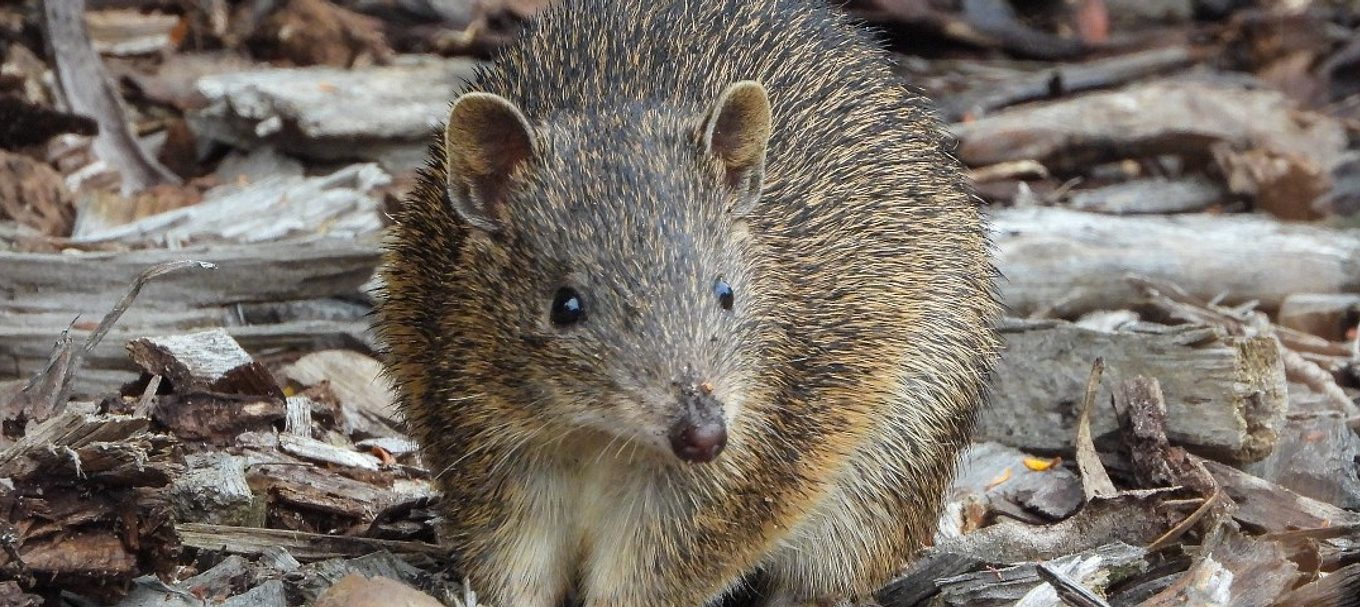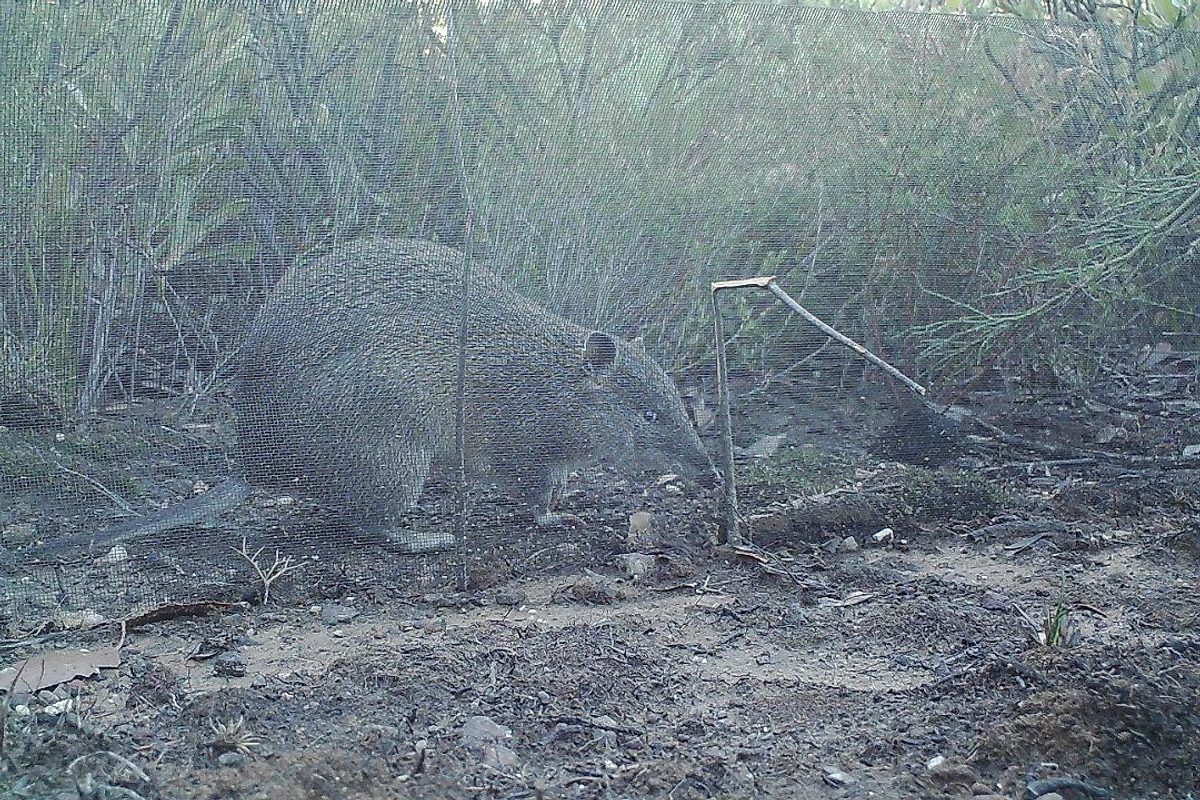
Find out how the nocturnal southern brown bandicoot is faring post-bushfire
Over the past few months we’ve shared the survival stories of some of the more obscure creatures affected by the 2019-20 summer bushfires on Kangaroo Island in South Australia.
There’s the western whipbirds, which have been recorded at nearly two-thirds of the sites that were recently surveyed, there’s the cluster of southern-emu wrens that were recorded in small unburnt patches that were surrounded by burnt vegetation.
There were the Australian owlet nightjars that had been spotted in two sites in Flinders Chase National Park, the beautiful firetails that were seen quietly foraging on the ground, and the vulnerable bassian thrush, which were detected when their iconic song was heard by ecologists – music to their ears.
And then there’s the little pygmy-possums, which are so elusive and similar-looking to the more common western pygmy-possum that more focused surveying work needs to be undertaken to get a true picture of their survival.
Now it’s time to learn about the southern brown bandicoot.
About southern brown bandicoot
The southern brown bandicoot is around half the size of a house-cat, and has a streamlined body with a long pointed snout, small round ears, a large rump and short tail.
It was once widely distributed on mainland Australia, but it now has its stronghold in South Australia on Kangaroo Island.
Some small populations still live patchily on mainland SA in the Mount Lofty Ranges and southeast, as well as on the Franklin Islands and St Francis Island.
What do we know about the species since the bushfires?
National Parks and Wildlife Service South Australia (NPWSSA) has been monitoring wildlife on Kangaroo Island with motion sensor-activated cameras since the bushfires.
Images that are captured help rangers and ecologists to better understand those native and feral animals living in, or passing through, the bushfire-affected areas.
It reveals the common species in the area or those active during the day, as well as the more elusive or endangered species, like the southern brown bandicoot.
While southern brown bandicoots live across much of Kangaroo Island, they have been a difficult species to detect and record, until the motion-sensing cameras captured them on-camera.
Each image taken by the cameras includes the date, time and location. Collectively, the images show which habitats the bandicoots are using, other species they share these habitats with, and what times of day and night they are active. For example, the bandicoot images indicate that they do sometimes emerge from their nests during the day, but much prefer the cover of darkness.

How is the species faring post-bushfire?
Southern brown bandicoots have been recorded in several of the small unburnt patches within the bushfire footprint. There’s even an image of a pair of them mating.
They are an animal that loves to dig short, conical (nose-shaped) holes while foraging in the leaf litter and top soil. These diggings can improve soil quality and the holes can trap seeds and help native plants to germinate, making them a crucial part of the ecological recovery process.
This could be self-serving behaviour, as the speed at which bandicoots recover post-bushfire depends on how quickly groundcover vegetation re-establishes.
Do you want to learn more about how SA’s wildlife is recovering post-bushfires? Read about theKangaroo Island dunnartor theglossy black-cockatoo.
(Main image courtesy of Martin Loftus)





